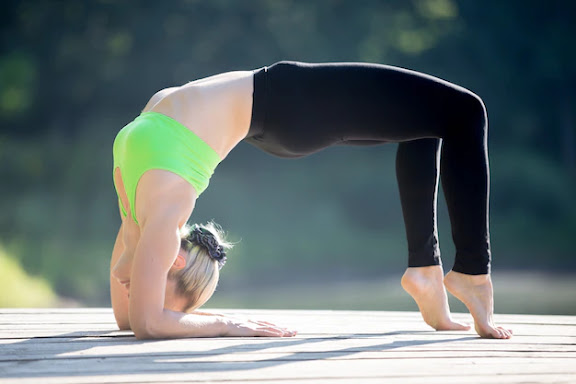Yoga Poses For
6 to 8 Years Kids
Yoga can be very beneficial for children between the ages of 6 to 8 years old.
Here are some of the ways in which yoga can be good for kids:
1. Promotes physical fitness:
Yoga is a great way for kids to stay physically active, and improve flexibility, balance, strength, and coordination.
2. Reduces stress and anxiety:
Practicing yoga can help children learn to manage stress and anxiety, and develop coping strategies that can benefit them throughout their lives.
3. Improves focus and concentration:
Yoga involves concentration and focus, which can help children improve their ability to pay attention in school and other activities.
4. Enhances self-awareness and self-esteem:
Yoga can help children develop a positive self-image and build self-esteem by teaching them to appreciate and accept their bodies and minds.
5. Encourages relaxation and better sleep:
Yoga can help children relax and unwind, making it easier for them to fall asleep and stay asleep.
6. Fosters creativity and imagination:
Yoga can inspire creativity and imagination, as children are encouraged to explore their bodies and minds through movement, breathing, and visualization.
Overall, yoga can be a fun and beneficial activity for children between the ages of 6 to 8 years old.
It can help them develop important skills and habits that can benefit them throughout their lives.
However, it's important to ensure that yoga is practiced safely and under the guidance of a qualified instructor.
Here Are 5 Yoga Poses For 6 To 8 Years Kids
 |
| Warrior I Pose is a powerful standing pose that strengthens the legs, and improve balance and focus |
- Start by standing at the top of the mat with the feet hip-distance apart and the arms by the sides.
- Take a step forward with the left foot, turning it outwards at a 45-degree angle, and keep the right foot pointing straight ahead.
- Encourage the child to bend their left knee, bringing it directly over the ankle, and keep the right leg straight and strong.
- As they inhale, encourage them to lift their arms up towards the ceiling, bringing the palms together if possible.
- Encourage the child to look straight ahead, and to hold the pose for a few deep breaths.
- Release the pose by bringing the arms down and stepping the left foot back to meet the right foot.
 |
| Warrior II Pose is a strong standing pose that helps to build strength and stability in the legs |
- Start by standing at the top of the mat with the feet hip-distance apart and the arms by the sides.
- Take a step forward with the left foot, turning it outwards at a 90-degree angle, and keep the right foot pointing straight ahead.
- Encourage the child to bend their left knee, bringing it directly over the ankle, and keep the right leg straight and strong.
- As they exhale, encourage them to stretch their arms out to the sides, parallel to the ground, with the left arm reaching forward and the right arm reaching backward.
- Encourage the child to look over their left fingertips, and to hold the pose for a few deep breaths.
- Release the pose by bringing the arms down and stepping the left foot back to meet the right foot.
 |
| Triangle Pose is a beneficial standing pose that helps to stretch and strengthen the legs |
- Start by standing at the top of the mat with the feet hip-distance apart and the arms by the sides.
- Take a step forward with the left foot, turning it outwards at a 90-degree angle, and keep the right foot pointing straight ahead.
- Encourage the child to stretch their arms out to the sides, parallel to the ground, with the palms facing down.
- As they exhale, encourage them to reach the left arm forward, and then hinge at the hips to bring the left hand down to the shin, ankle, or the ground outside the left foot.
- Encourage the child to reach the right arm up towards the ceiling, and to look up at the right hand if it feels comfortable.
- Hold the pose for a few deep breaths, and then repeat on the other side by stepping the right foot forward.
- Start by lying on their back on the mat with the knees bent and the feet flat on the ground.
- Encourage the child to lift their hips up towards the ceiling, and to interlace their hands behind their back.
- Encourage the child to press their feet into the ground to lift their hips higher, and to roll their shoulders underneath their body to create more space in the chest and shoulders.
- Encourage the child to hold the pose for a few deep breaths, and then release by unclasping the hands and slowly lowering the hips back down to the ground.
 |
| Seated Forward Bend Pose is a calming and grounding pose that helps to stretch and strengthen the back |
- Start by sitting on the mat with the legs extended out in front of the body and the feet flexed.
- Encourage the child to sit up tall, with the spine straight and the shoulders relaxed.
- As they exhale, encourage the child to hinge forward from the hips, reaching for the toes or shins with their hands.
- Encourage the child to keep the knees bent if needed, and to avoid rounding the spine.
- Encourage the child to hold the pose for a few deep breaths, and then release by slowly sitting up tall again.


Comments
Post a Comment